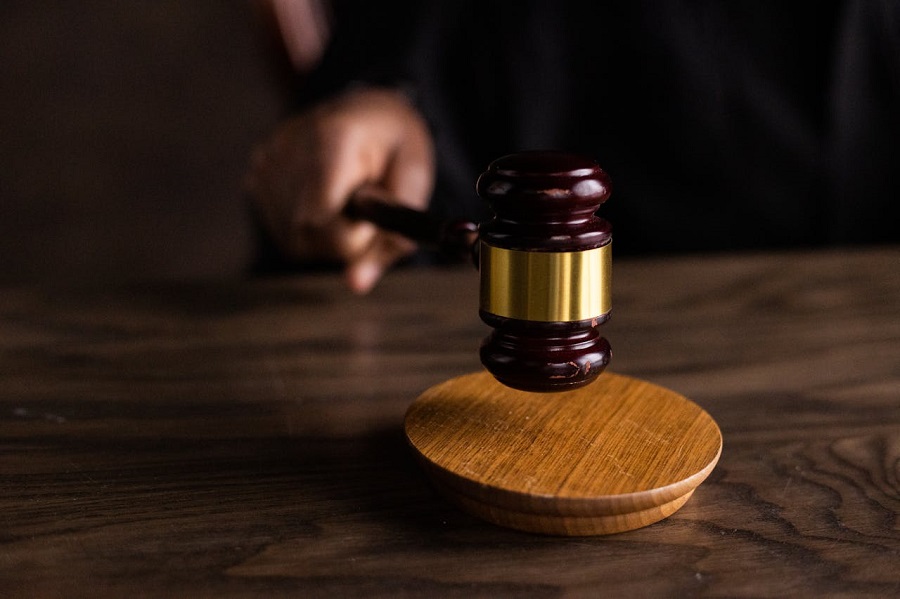What is the Solicitors Disciplinary Tribunal (SDT)?

The Solicitors Disciplinary Tribunal (SDT) is an independent body responsible for adjudicating against solicitors who have committed serious breaches of professional rules in the United Kingdom, in accordance with the Solicitors Act 1974 and associated regulations. It plays a central role in protecting the integrity and reputation of the profession by ensuring that ethical standards are upheld. A solicitor facing proceedings before the SDT may defend themselves, but they will usually engage a colleague to prepare and represent them.

Key Takeaway: What role does the SDT play in relation to solicitors who have committed misconduct?
Find out exactly how the proceedings work and what role the SRA plays in these cases.
What is the Solicitors Disciplinary Tribunal (SDT)?
The Solicitors Disciplinary Tribunal (SDT) and the Solicitors Regulation Authority (SRA) together form the core disciplinary regulatory framework for solicitors, ensuring both public protection and the maintenance of the profession’s reputation.
What is the difference between the SRA and the SDT?
The Solicitors Regulation Authority (SRA) is the primary regulatory body for solicitors in England and Wales. Its main mission is to protect the public, uphold high professional standards, and ensure that solicitors act ethically and competently. The SRA sets the rules and guidance that solicitors must follow and monitors compliance with these standards.
When a complaint is received, the SRA conducts a thorough investigation, reviewing documentation, seeking explanations from the solicitor concerned, and gathering evidence from clients or third parties. Based on the findings, the SRA determines whether the matter can be resolved through internal measures, such as formal warnings, training, or enhanced supervision. You can review SRA recent decisions on their website to understand current regulatory trends.
When the SRA identifies serious misconduct that cannot be addressed through internal measures, it may intervene directly by closing the practice and taking control of client files and funds; a process tracked on the SRA intervention list. This protects clients and ensures orderly management of the firm’s affairs whilst the matter is investigated.
The SDT only becomes involved when breaches are serious enough to justify a formal hearing. Unlike civil or criminal courts, it does not determine criminal liability but focuses on serious disciplinary breaches and protecting the profession’s reputation.
What types of misconduct does the SDT examine?
The SDT deals with several categories of misconduct, including:
- Professional misconduct affecting client or public trust: A solicitor misleading a client about the progress of a case, providing false information to the court, or failing to maintain professional integrity in dealings with third parties.
- Fraud or misappropriation of client funds: Diverting client money from a trust account for personal use, falsifying financial records, or concealing transactions to cover up irregularities.
- Undeclared or poorly managed conflicts of interest: Acting for two clients in the same matter without disclosure, or advising a client where the solicitor has a personal financial interest in the outcome.
- Failure to comply with legal and professional obligations: Consistent failure to meet court deadlines, ignoring client instructions, withholding key documents, or failing to communicate transparently about costs and risks.
What sanctions can the SDT impose?
Depending on the severity of the misconduct, the tribunal can impose different sanctions:
- Formal warning: A solicitor who fails to communicate adequately with a client but does not cause financial loss may receive a formal warning.
- Temporary suspension from practicing: A solicitor who mishandles client funds or fails to maintain proper accounting records may be suspended for a defined period, reflecting serious but remediable misconduct.
- Removal from the roll of solicitors (striking off): In the most serious cases, solicitors are permanently removed from practice, such as when deliberate misappropriation of client funds or repeated gross misconduct is proven.
Decisions are published as SDT decisions, providing a reference point for the profession and allowing other solicitors to understand the standards expected.
How does a procedure before the SDT take place?
The procedure before the Solicitors Disciplinary Tribunal (SDT) follows a strict process to ensure fairness and transparency in the assessment of disciplinary breaches.
Step 1: Opening of the investigation by the SRA
It all begins with the Solicitors Regulation Authority (SRA), which receives complaints or reports concerning a solicitor. The SRA reviews the facts, collects evidence, and assesses whether the case poses a sufficient risk to be referred to the SDT. This stage filters out less serious matters that can be resolved through internal corrective measures.
Step 2: Notification and preparation of the solicitor
Once the referral is decided, the solicitor is formally notified of the allegations. They may represent themselves, but it is common to seek assistance from a solicitor specialising in disciplinary proceedings to review the case, prepare arguments, and manage evidence for the hearing.
Step 3: Preliminary hearing
A preliminary hearing may be held to clarify procedural issues, set deadlines, and review the admissibility of evidence. This helps structure the case before the main hearing and resolve procedural matters without unnecessarily prolonging the SDT hearing.
Step 4: SDT hearings (main hearings)
During the main SDT hearings, the tribunal hears arguments from both the solicitor and the SRA, examines evidence, and may question the solicitor if needed. Key participants include the presiding judge, tribunal members, SRA representatives, and the solicitor’s counsel. This stage is the core of the disciplinary process.
Step 5: Deliberation and decision
After the hearing, the tribunal deliberates and issues its decision. Sanctions range from a formal warning to a temporary suspension or removal from the roll of solicitors. The solicitor may appeal to the Court of Appeal or another competent body. The average duration of an SDT hearing varies from a few days to several weeks, depending on the complexity of the case.
SDT statistics and recent trends: what do the numbers show?
The annual data published by the Solicitors Disciplinary Tribunal (SDT) provides a valuable overview of professional compliance within the legal sector. These statistics not only highlight the scale of disciplinary cases but also reveal broader trends that solicitors must understand.
How many cases reach the SDT each year?
Each year, the SDT hears several hundred cases, although only a fraction of the complaints received by the SRA result in a formal hearing. This reflects the SRA’s filtering role, referring only the most serious matters to the tribunal.
What sanctions are most common?
Recent figures show that approximately one third of solicitors appearing before the SDT are struck off, while another third receive a temporary suspension. Other cases result in formal warnings, fines, or conditions imposed on practising certificates.
What types of misconduct are most frequent?
The most common breaches involve mismanagement of client funds, undeclared conflicts of interest, and failure to act with due diligence in case management. These patterns highlight the importance of strict compliance with accounting rules, ethical duties, and professional standards.
How have sanctions evolved over time?
In recent years, there has been a clear increase in the severity of sanctions, particularly in cases involving dishonesty, fraud, or breaches of integrity. The SDT has shown a consistent approach in imposing heavy penalties for serious misconduct, reinforcing public confidence in the profession.
Landmark cases before the SDT
The decisions of the Solicitors Disciplinary Tribunal (SDT) provide concrete examples of misconduct that can lead to severe sanctions. They serve as essential reference points for the profession, highlighting the risks solicitors face when failing to comply with ethical and professional standards.
The Sanjay Panesar case
Sanjay Panesar was temporarily suspended for failings in client management. The tribunal emphasised the importance of rigorous record-keeping and transparent communication with clients. This case is a reminder that the solicitor–client relationship is built on clarity and traceability.
The Ashley Hurst case
Ashley Hurst was struck off following serious failings in the management of client funds. The SDT stressed the gravity of financial negligence and its direct impact on clients. This case has become a significant example of the risks associated with imprudent handling of financial matters.
The Geldards solicitor struck off case
In another case, a Geldards solicitor was struck off for fraud and conflict of interest. The tribunal reiterated the absolute importance of integrity and of clearly separating personal interests from professional duties. This judgment illustrates the SDT’s zero-tolerance approach to breaches of probity.
Do I need a solicitor to represent me before the SDT?
Whilst not legally mandatory, instructing a specialist solicitor is strongly advisable. Disciplinary proceedings are complex, high-stakes matters where your professional standing is at risk.
- Expert knowledge of tribunal procedures: A solicitor experienced in SDT hearings understands tribunal expectations and uses knowledge of SRA recent decisions and SDT decisions to build the strongest defence.
- Strategic case preparation: Disciplinary proceedings require meticulous preparation, gathering documents, identifying weaknesses in the SRA’s case, and preparing witness statements. A specialist ensures nothing is overlooked.
- Objective advocacy: Facing potential striking off is overwhelming. A solicitor provides objective counsel, manages SRA communication, and advocates forcefully on your behalf during SDT hearings.
Most solicitors appearing before the SDT are represented by colleagues specialising in this area. Self-representation significantly increases the risk of an adverse outcome.
FAQs
How much does a SDT hearing cost for a solicitor? The costs depend on the complexity of the case. In most situations, the sanctioned solicitor may be ordered to pay part or all of the tribunal’s costs, in addition to their own legal fees. Legal representation typically costs between £10,000 and £50,000 or more for complex cases.
Are SDT decisions available to the public? Yes, most STD decisions are published online and are freely accessible. This transparency helps inform the public and reminds solicitors of the professional standards they are expected to uphold.
Can a solicitor be reinstated after being struck off? In certain circumstances, a struck-off solicitor may apply for reinstatement, but only after a set period (typically five years), and under strict conditions. The SDT will assess whether they have shown rehabilitation and a record of good conduct.
The Solicitors Disciplinary Tribunal (SDT) and the Solicitors Regulation Authority (SRA) play an essential role in maintaining public confidence in the legal profession. Through its decisions, the SDT sets clear benchmarks for acceptable conduct and the consequences of professional misconduct. These rulings do not only affect the solicitors involved; they also serve as guidance for the wider profession, reinforcing ethical standards across the board.
Defend your professional reputation!
Qredible’s network includes solicitors who specialise in SDT proceedings, understand the tribunal process, and can build a strong defence based on the latest SDT decisions.
KEY TAKEAWAYS
- The Solicitors Disciplinary Tribunal adjudicates serious professional misconduct by solicitors in England and Wales, working with the SRA which investigates and refers serious cases for formal hearings.
- Sanctions range from formal warnings to striking off, following a structured process of investigation, notification, preliminary and main hearings.
- Landmark cases like Sanjay Panesar, Ashley Hurst, and the Geldards solicitor demonstrate professional failings, with published SDT decisions guiding the profession.
Articles Sources
- solicitorstribunal.org.uk - https://www.solicitorstribunal.org.uk/
- legislation.gov.uk - https://www.legislation.gov.uk/ukpga/1974/47
- gov.uk - https://www.gov.uk/government/organisations/legal-services-board
Do you need a solicitor?
Find a solicitor on Qredible in just a few easy steps

















